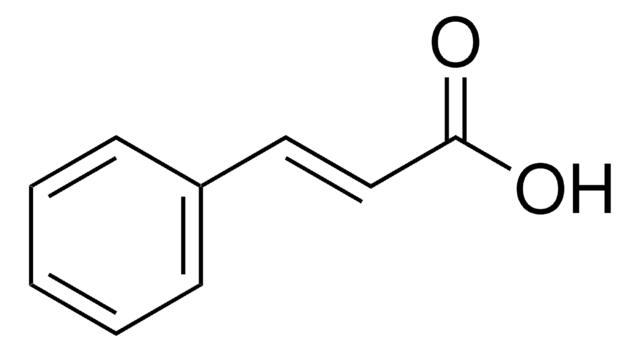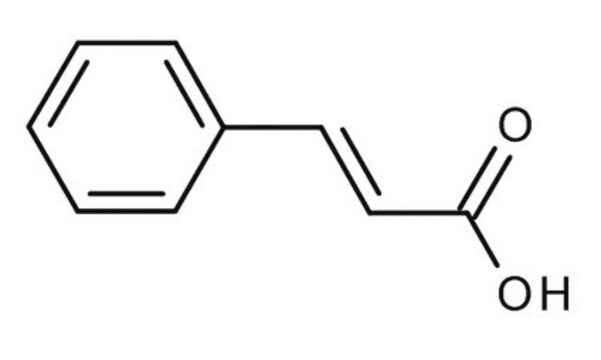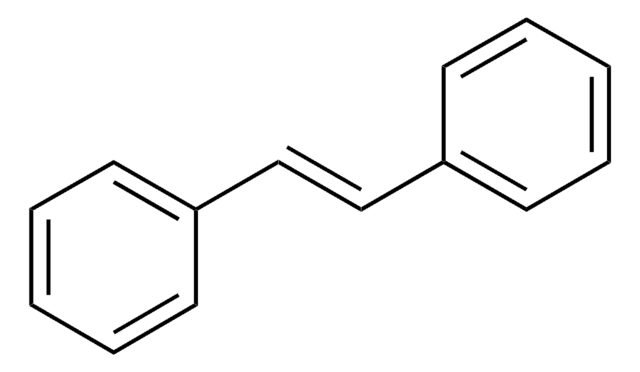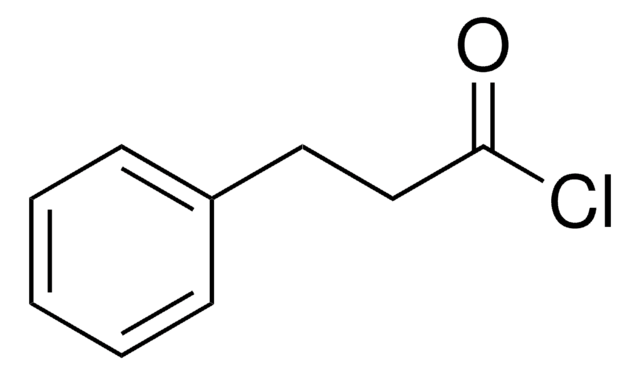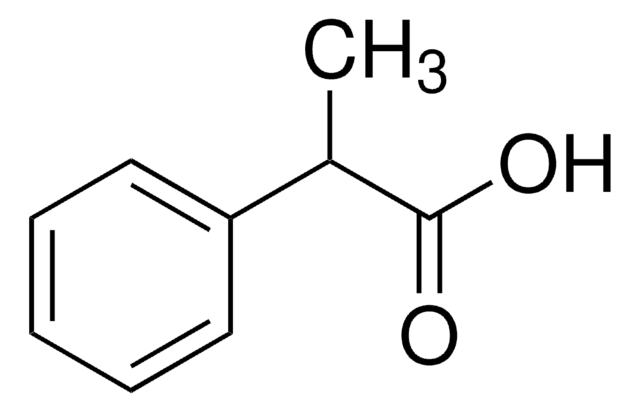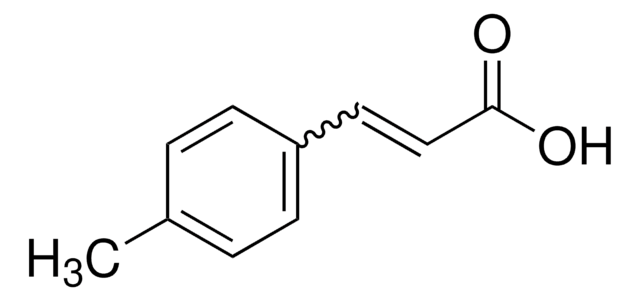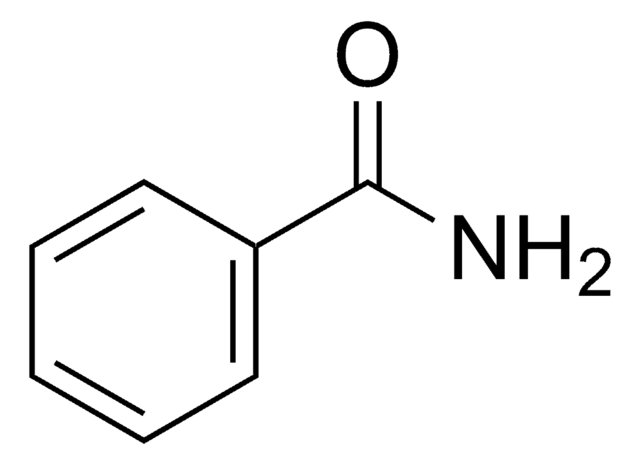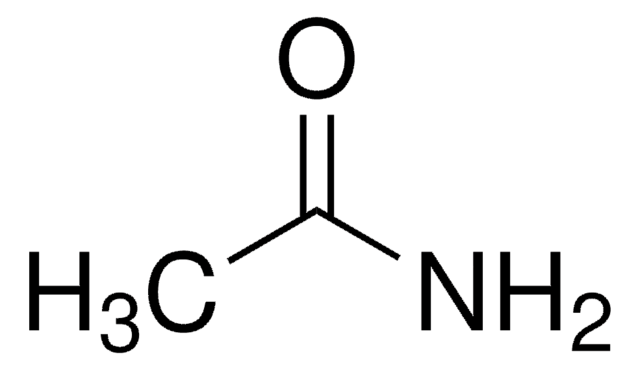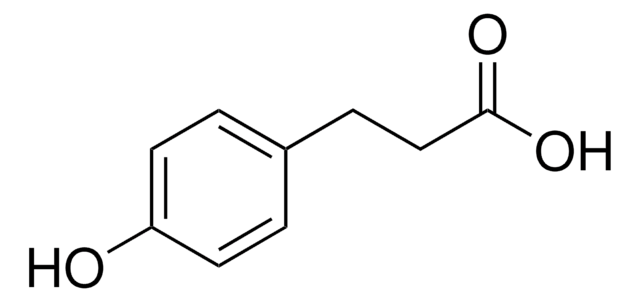135232
Hydrocinnamic acid
99%
Sinonimo/i:
3-Phenylpropionic acid, Benzylacetic acid
About This Item
Prodotti consigliati
Livello qualitativo
Saggio
99%
Stato
solid
P. ebollizione
280 °C (lit.)
Punto di fusione
45-48 °C (lit.)
Solubilità
ethanol: soluble 50 mg/mL, clear, colorless to faintly yellow
Densità
1.071 g/mL at 25 °C (lit.)
Gruppo funzionale
carboxylic acid
phenyl
Stringa SMILE
OC(=O)CCc1ccccc1
InChI
1S/C9H10O2/c10-9(11)7-6-8-4-2-1-3-5-8/h1-5H,6-7H2,(H,10,11)
XMIIGOLPHOKFCH-UHFFFAOYSA-N
Cerchi prodotti simili? Visita Guida al confronto tra prodotti
Descrizione generale
Applicazioni
Codice della classe di stoccaggio
11 - Combustible Solids
Classe di pericolosità dell'acqua (WGK)
WGK 1
Punto d’infiammabilità (°F)
235.4 °F - closed cup
Punto d’infiammabilità (°C)
113 °C - closed cup
Dispositivi di protezione individuale
Eyeshields, Gloves, type N95 (US)
Scegli una delle versioni più recenti:
Possiedi già questo prodotto?
I documenti relativi ai prodotti acquistati recentemente sono disponibili nell’Archivio dei documenti.
I clienti hanno visto anche
Il team dei nostri ricercatori vanta grande esperienza in tutte le aree della ricerca quali Life Science, scienza dei materiali, sintesi chimica, cromatografia, discipline analitiche, ecc..
Contatta l'Assistenza Tecnica.